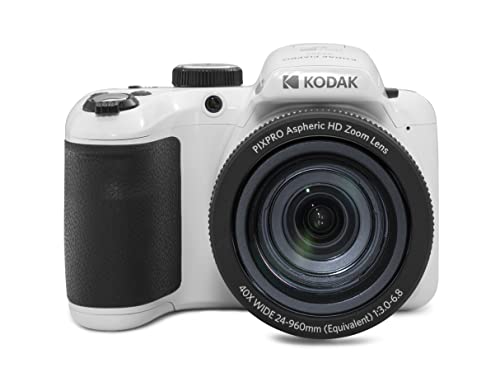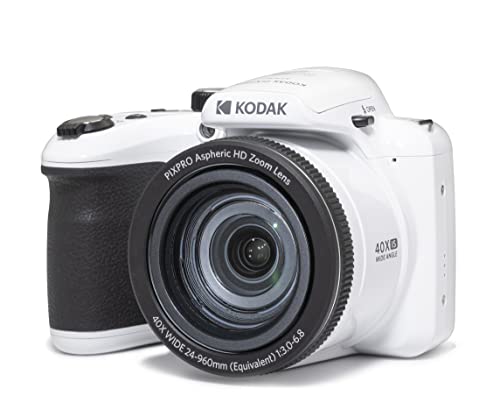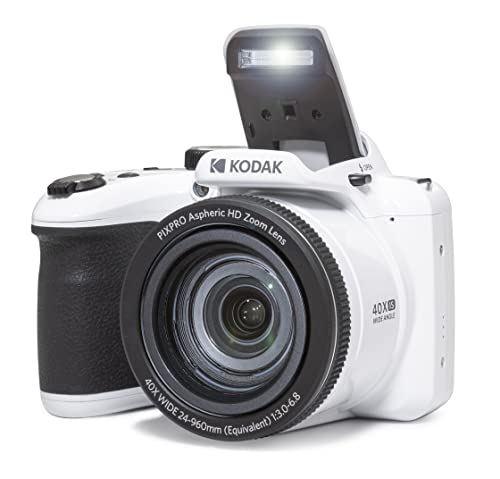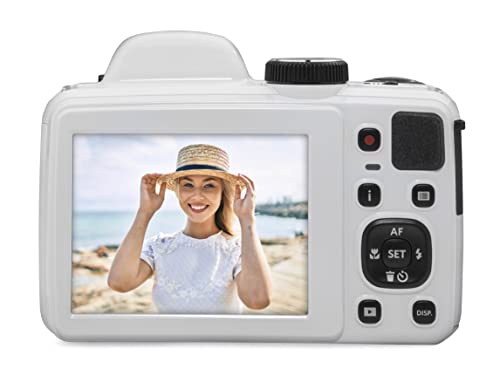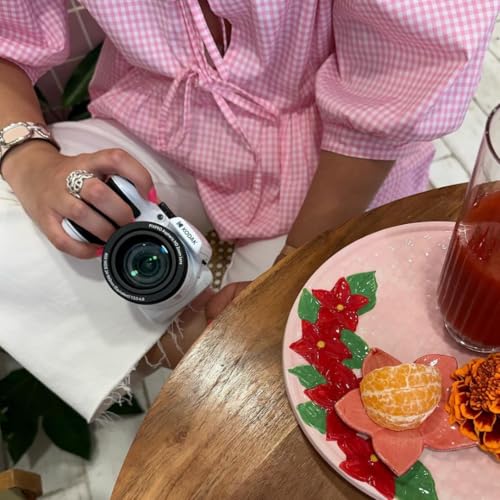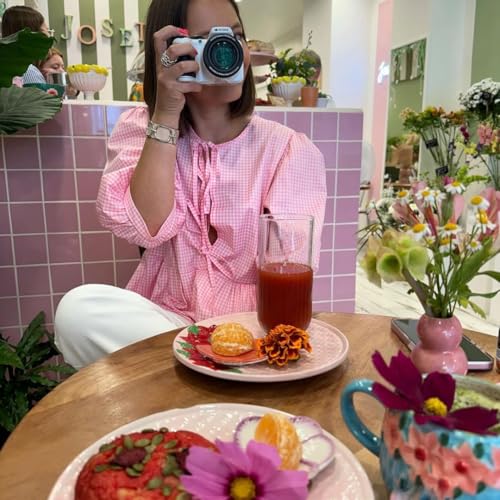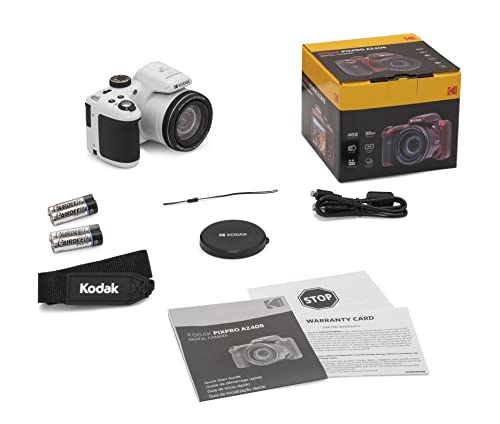




When it comes to capturing the intricate details and subtle nuances of fine art, having the right camera is essential. As a fine art photographer myself, I understand the importance of high-quality equipment that can effectively capture the essence of a piece. In this article, I will discuss some of the best digital cameras that are well-suited for fine art photography.
The first camera that deserves mention is the Nikon D850. With its impressive 45.7-megapixel full-frame sensor, this camera delivers stunning image quality that is crucial for capturing fine details and vibrant colors. The D850 also offers a wide dynamic range, allowing photographers to capture both shadows and highlights with exceptional clarity. Its fast autofocus system and high-speed continuous shooting make it a reliable choice for capturing moving subjects or events.
Another top contender in the world of fine art photography is the Canon EOS 5DS R. This camera boasts a remarkable 50.6-megapixel full-frame CMOS sensor, ensuring extraordinary image resolution and sharpness. The EOS 5DS R also features a low-pass filter cancellation effect, which helps to enhance the fine details of the captured images. With its advanced dual DIGIC 6 image processors and a high-speed continuous shooting rate of 5 fps, this camera is a workhorse that offers both exceptional image quality and versatility.
Choosing the Right Camera for Capturing the Essence of Your Artwork
As an artist, capturing the essence and details of your artwork is crucial when it comes to sharing it with others. That’s why finding the right digital camera for fine art photography is essential. With a wide range of options available, it can be overwhelming to choose the perfect one, but by considering a few key factors, you can make an informed decision.
Megapixels and Resolution: One of the most important features to consider is the number of megapixels and resolution the camera can offer. The higher the megapixels, the more detail and clarity your photographs will have, allowing you to perfectly capture the intricate elements of your artwork.
Image Sensor: The image sensor plays a vital role in capturing accurate colors and tones. A larger image sensor will produce better image quality, ensuring that the colors in your artwork appear vibrant and true to life. It’s worth investing in a camera with a larger image sensor to achieve the best results.
- Manual Controls: Opting for a camera that offers manual controls allows you to have complete control over the settings and allows you to experiment with different exposures, white balance, and aperture settings. This flexibility is particularly important when it comes to capturing your artwork under various lighting conditions.
- Macro Capability: When photographing fine details in your artwork, the ability to focus closely on specific areas is crucial. Look for a camera with a macro feature that allows you to capture intricate details and textures.
- RAW Format: Choosing a camera that supports shooting in RAW format gives you the ability to capture and preserve the maximum amount of data. This format provides the flexibility to edit and enhance your photographs in post-processing without compromising the image quality.
- Image Stabilization: To ensure sharp and clear images, it’s important to select a camera with effective image stabilization. This feature compensates for any unintentional camera shake, resulting in crisp and focused photographs.
By considering these factors and conducting thorough research, you can find the perfect digital camera that will accurately capture the essence and details of your artwork. Remember, the camera is just a tool, and it’s your artistic vision and technique that will truly bring your artwork to life.
Understanding the importance of a high-resolution sensor in fine art photography
As a fine art photographer, I have come to understand the crucial role that a high-resolution sensor plays in capturing stunning and detailed images. The sensor is the heart of a digital camera, responsible for converting light into digital information. When it comes to fine art photography, where every detail and nuance matters, having a high-resolution sensor is essential.
A high-resolution sensor, with its increased number of pixels, allows for capturing intricate details and textures with accuracy and clarity. It enables me to produce images that are rich in tonal range, exhibiting a wide spectrum of colors and shades. This high level of detail is what elevates the quality of fine art photography, as it brings the viewer closer to the subject, allowing them to explore every nook and cranny.
Whether I am shooting landscapes, still life, or portraits, having a high-resolution sensor gives me the flexibility to crop and enlarge my images without compromising on quality. It provides me with the freedom to experiment with different compositions and perspectives, knowing that even the smallest details will remain sharp and well-defined.
Furthermore, when printing fine art photographs, a high-resolution sensor produces files with more information, resulting in prints that are not only visually appealing but also exhibit a remarkable level of detail. The fine nuances and intricate textures in the print can truly come to life, creating an immersive experience for the viewer.
In conclusion, understanding the importance of a high-resolution sensor is crucial for any fine art photographer. It allows for capturing incredible detail, providing the ability to crop and enlarge images without compromising quality, and producing prints that are visually stunning and immersive. As a fine art photographer, investing in a digital camera with a high-resolution sensor has truly transformed the way I approach and create my art.
Exploring the Benefits of a Camera with a High Pixel Count
As a passionate fine art photographer, I understand the importance of capturing the smallest details in my subjects. That’s why I believe having a camera with a high pixel count is an essential tool in my craft. The benefits of such a camera go beyond simply being able to print larger images; it allows me to create stunningly detailed photographs that truly capture the essence of my subjects.
One of the main advantages of a high pixel count camera is the ability to capture a greater level of detail. With more pixels, I can capture even the finest textures, lines, and contours in my subjects, resulting in images that are incredibly sharp and lifelike. This level of detail adds depth and dimension to my photographs, making them stand out and grab the viewer’s attention.
Additionally, a high pixel count camera allows for greater flexibility when it comes to cropping and post-processing. With more pixels to work with, I can crop my images without sacrificing resolution, ensuring that I can fine-tune the composition and focus on the most compelling elements of a scene. This flexibility also extends to post-processing, as I have more information to work with when adjusting colors, tones, and other aspects of the image.
Another benefit of a high pixel count camera is the ability to create large-scale prints without sacrificing image quality. With a higher resolution, I can print my photographs at larger sizes, allowing viewers to appreciate the intricate details and textures that might otherwise be lost in smaller prints. This opens up new possibilities for displaying my work in galleries and exhibitions, where larger prints can have a greater visual impact.
In conclusion, a camera with a high pixel count is a valuable tool for any fine art photographer. It allows for capturing incredible detail, provides flexibility in cropping and post-processing, and enables the creation of large-scale, high-quality prints. Investing in a camera with a high pixel count has significantly enhanced my ability to capture and showcase the beauty of my subjects, and I highly recommend it to any photographer who wants to take their fine art photography to the next level.
Exploring the world of mirrorless cameras for fine art photography
As a fine art photographer, I am always on the lookout for the best tools and equipment that will help me capture the beauty and essence of my subjects. Recently, I have been delving into the world of mirrorless cameras, as they offer a range of benefits that can greatly enhance the quality of my fine art photographs.
One of the biggest advantages of mirrorless cameras is their compact size and lightweight design. This makes them incredibly portable, allowing me to easily carry them around with me on photo shoots, without feeling weighed down or restricted. It also means that I can explore different locations and angles, capturing unique perspectives that may have been difficult to achieve with a larger, bulkier camera.
Superior image quality and versatility
Another aspect that I have come to appreciate about mirrorless cameras is their superior image quality. The absence of a mirror box allows for a more direct transfer of light to the image sensor, resulting in sharper, more detailed images with rich colors and tonal range. This is especially important in fine art photography, where every detail and nuance can make a significant impact on the final artwork.
In addition to their excellent image quality, mirrorless cameras also offer a wide range of creative features and advanced shooting modes. With the ability to switch lenses and utilize various accessories, I can experiment with different focal lengths, achieve unique depth of field effects, and explore various artistic techniques such as long exposures or macro photography. This versatility allows me to push the boundaries of my creativity and capture truly captivating fine art images.
The future of fine art photography
As the technology behind mirrorless cameras continues to evolve and improve, I believe they will play a significant role in the future of fine art photography. With their compact size, superior image quality, and versatile features, mirrorless cameras offer a compelling option for photographers who strive to create stunning, museum-worthy artwork. Whether you are a professional or an amateur enthusiast, exploring the world of mirrorless cameras can open up a whole new realm of possibilities for your fine art photography.
Discovering the Advantages of Mirrorless Technology in Capturing Every Detail
When it comes to fine art photography, capturing every detail is crucial. As an artist, I strive to present my work in the most accurate and visually stunning way possible. This is why I have discovered the advantages of mirrorless technology in my photography journey.
Mirrorless cameras offer a compact and lightweight alternative to traditional DSLRs, making them easier to handle and more portable. This is particularly important when photographing fine art, as I often need to carry my equipment to various locations and exhibitions. With a mirrorless camera, I can easily take my camera with me wherever I go, without sacrificing image quality.
Mirrorless cameras also boast impressive autofocus capabilities, allowing me to quickly and accurately focus on even the smallest details. This is essential for capturing the intricate textures and subtle nuances that make fine art photography so captivating. The advanced autofocus technology in mirrorless cameras ensures that every detail is sharp and well-defined.
Another advantage of mirrorless technology is its electronic viewfinder. Unlike traditional DSLRs that rely on optical viewfinders, mirrorless cameras use an electronic viewfinder that displays the image as it will appear in the final photograph. This instant preview feature allows me to adjust my composition, exposure, and other settings in real-time, ensuring that I capture the perfect shot every time.
In conclusion, mirrorless cameras have revolutionized my fine art photography. Their compact size, impressive autofocus capabilities, and electronic viewfinder have allowed me to capture every detail with precision and accuracy. If you’re looking to enhance your own fine art photography, I highly recommend exploring the advantages of mirrorless technology.
The best full-frame cameras for fine art photography: capturing the colors and textures perfectly
As an avid fine art photographer, capturing the true colors and intricate textures of my subjects is of utmost importance to me. To achieve this level of precision, I have found that using a full-frame camera is essential. These cameras have larger sensors, which allows for greater detail and color accuracy, resulting in stunning fine art photographs.
Fujifilm X-T4: One of the top full-frame cameras for fine art photography is the Fujifilm X-T4. This camera boasts a 26.1-megapixel sensor, providing excellent resolution and detail in every shot. With its advanced color reproduction technology, the X-T4 ensures accurate color representation, bringing my fine art photographs to life. Additionally, its 5-axis in-body image stabilization system helps me maintain sharpness and clarity, even in challenging shooting conditions.
Nikon D850: Another fantastic option for fine art photography is the Nikon D850. This full-frame camera features a remarkable 45.7-megapixel sensor, delivering incredibly high-resolution images that capture even the finest details. The D850’s dynamic range is exceptional, allowing me to capture a wide range of tones and textures in my fine art photographs. Furthermore, its robust build and weather-sealed construction provide durability and reliability, making it ideal for outdoor shoots.
- Sony Alpha A7R IV: The Sony Alpha A7R IV is a full-frame camera renowned for its impressive 61-megapixel sensor. This camera offers exceptional resolution and dynamic range, ensuring that every detail and color nuance in my fine art photographs is captured with precision. The A7R IV’s advanced autofocus system tracks subjects accurately, allowing me to focus on composition and artistic expression.
- Canon EOS R5: The Canon EOS R5 is a full-frame camera that excels in both still photography and videography. With its 45-megapixel sensor and advanced image processing, this camera produces stunningly detailed fine art photographs. Its in-body image stabilization and fast autofocus system make it effortless to capture sharp images, while its 8K resolution capabilities open up new creative possibilities.
In conclusion, when it comes to fine art photography, full-frame cameras are a must-have. The Fujifilm X-T4, Nikon D850, Sony Alpha A7R IV, and Canon EOS R5 are all excellent options that provide exceptional image quality, capturing colors and textures with remarkable accuracy. These cameras offer the versatility and technical capabilities necessary for creating captivating fine art photographs that truly showcase the beauty of your subjects.
Comparing the best full-frame cameras for achieving stunning image quality
When it comes to fine art photography, achieving stunning image quality is of utmost importance. The right camera can make all the difference in capturing the intricate details and nuances that make a photograph truly exceptional. In this article, I will compare some of the top full-frame cameras that are known for their ability to produce high-quality images.
1. Canon EOS R5: The Canon EOS R5 is a full-frame mirrorless camera that boasts an impressive 45-megapixel sensor. This camera excels in capturing fine details, thanks to its advanced resolution and high ISO sensitivity. The R5 also offers excellent dynamic range, allowing for beautiful color reproduction and tonal gradation in every shot.
2. Sony A7R IV: The Sony A7R IV is another full-frame mirrorless camera that is renowned for its exceptional image quality. With a 61-megapixel sensor, the A7R IV delivers incredibly detailed shots with stunning clarity. It also features a wide ISO range and excellent dynamic range, making it an excellent choice for capturing fine art photography.
- 3. Nikon D850: The Nikon D850 is a full-frame DSLR camera that offers outstanding image quality. With a 45.7-megapixel sensor, this camera captures intricate details and produces sharp, noise-free images. It also has an impressive ISO range, allowing for great low-light performance.
In conclusion, when it comes to achieving stunning image quality in fine art photography, the Canon EOS R5, Sony A7R IV, and Nikon D850 are top contenders. These full-frame cameras offer high-resolution sensors, excellent dynamic range, and advanced features that allow photographers to capture the beauty and intricacies of their subjects. Whether you prefer a mirrorless or DSLR camera, these options provide the tools necessary to create exceptional fine art photographs.
The Role of Image Stabilization in Fine Art Photography
As a fine art photographer, I understand the importance of capturing sharp and detailed images. To achieve this, there are various factors that come into play, and one of the most crucial ones is image stabilization. Whether shooting handheld or with a tripod, image stabilization technology helps to minimize camera shake and produce clear, high-quality images.
Image stabilization is particularly essential in fine art photography because it allows for long exposure shots without the risk of blurring. Fine art photography often involves capturing still life compositions, landscapes, or architectural elements, where longer exposure times are necessary to capture intricate details and a sense of motion. With image stabilization, photographers can achieve sharper images even in low light conditions or when shooting at slower shutter speeds.
There are two main types of image stabilization: optical and sensor-shift. Optical image stabilization utilizes lens elements that move to counteract any camera shake, resulting in a stabilized image. On the other hand, sensor-shift stabilization physically moves the camera’s image sensor to compensate for any movement. Both techniques effectively reduce blur and allow for more freedom in capturing creative compositions.
When considering a digital camera for fine art photography, it is crucial to choose one with reliable image stabilization capabilities. Look for cameras that offer advanced stabilization systems, such as dual-axis or five-axis stabilization, as they provide enhanced stability and flexibility. Additionally, cameras with built-in image stabilization can compensate for any lenses that lack stabilization technology.
In conclusion, image stabilization plays a vital role in fine art photography by ensuring sharpness and clarity in images. It allows photographers to capture detailed shots, even in challenging lighting conditions or when using slow shutter speeds. By selecting a camera with excellent image stabilization capabilities, fine art photographers can confidently pursue their artistic vision without compromising image quality.
Enhancing Fine Art Images with Camera Stabilization Technologies
Capturing stunning fine art images requires not only skillful composition and lighting techniques, but also absolute precision and stability in capturing details. Camera stabilization technologies play a crucial role in enhancing the overall quality of fine art photography, allowing photographers to capture sharper images and reducing the risk of blurriness caused by movement.
Image Stabilization: One of the key camera stabilization technologies is image stabilization, which compensates for the movement of the camera during exposure. There are two main types of image stabilization: optical and sensor-shift. Optical image stabilization uses lenses or prisms to counteract shaking, while sensor-shift stabilization physically moves the image sensor to correct for movement. Both methods can significantly improve image sharpness, especially when shooting in low light or using long telephoto lenses.
Tripods and Monopods: While image stabilization systems built into cameras can be effective, they have limitations. For maximum stability, photographers often rely on tripods and monopods to eliminate any camera shake entirely. Tripods provide stability for long exposures or when capturing highly detailed shots, while monopods are more portable and practical for fast-paced shooting situations. Using a tripod or monopod allows photographers to create sharp images even in challenging lighting conditions or when working with heavy equipment.
- Ball Heads and Gimbal Heads:
Another essential tool for camera stabilization is the ball head or gimbal head. These heads attach to the tripod and provide fluid movement and stability for the camera. Ball heads are versatile and allow photographers to quickly adjust the composition. On the other hand, gimbal heads are specifically designed for long and heavy lenses, providing smooth movement and excellent balance while tracking subjects. Both types of heads come in various sizes and models to suit different needs and camera setups.
Conclusion: Camera stabilization technologies have revolutionized fine art photography by enabling photographers to capture sharper, more detailed images. Whether it’s through built-in image stabilization, tripods and monopod support, or specialized heads, these technologies significantly enhance the quality of fine art images by minimizing camera shake and ensuring precise composition. Investing in camera stabilization equipment is essential for photographers who want to improve their craft and take their fine art photography to the next level.
Best digital camera for fine art photography
Features
| Part Number | DC226 |
| Model | DC226 |
| Warranty | 1 year |
| Color | Black |
| Size | Full-Size |
Features
| Model | W08 |
| Color | YL15-W08-C-Black |
| Is Adult Product |
Features
| Part Number | 5811C012 |
| Model | 5811C012 |
| Warranty | 1 year manufacturer |
| Color | Black |
| Release Date | 2023-03-16T00:00:01Z |
| Price history for Canon EOS R50 Mirrorless Camera Kit | |
|---|---|
|
Latest updates:
|
|
Features
| Part Number | 3380C132 |
| Model | 3380C132 |
| Warranty | 1 Year Manufacturer |
| Color | Black |
| Release Date | 2020-04-29T00:00:01Z |
| Size | 105mm |
Features
| Part Number | 5803C012 |
| Model | 5803C012 |
| Warranty | 1 year manufacturer |
| Color | Black |
| Release Date | 2023-04-18T00:00:01Z |
| Size | EOS R8 w/RF24-50mm |
| Price history for Canon EOS R8 Full-Frame Hybrid Camera | |
|---|---|
|
Latest updates:
|
|
Features
| Part Number | ILCE7M3K/BQ |
| Model | ILCE7M3K/B |
| Warranty | 1 |
| Color | Black |
| Release Date | 2018-04-10T00:00:01Z |
| Size | 35-mm |
| Price history for Sony a7 III Full-Frame Mirrorless Camera | |
|---|---|
|
Latest updates:
|
|
Features
| Part Number | AZ405-WH |
| Model | AZ405-WH |
| Warranty | 1 year manufacturer |
| Color | White |
| Release Date | 2022-11-05T00:00:01Z |
| Language | English |
| Price history for KODAK PIXPRO AZ405 Digital Vlogging Camera | |
|---|---|
|
Latest updates:
|
|
Question and answers:
What is the best digital camera for fine art photography?
The best digital camera for fine art photography is subjective and depends on the specific needs and preferences of the photographer. However, some popular options among photographers are the Nikon D850, Canon EOS 5D Mark IV, and Sony A7R III.
What features should I look for in a digital camera for fine art photography?
When choosing a digital camera for fine art photography, it is important to look for features such as high resolution (at least 24 megapixels), a wide dynamic range, low noise at high ISO settings, and the ability to shoot in raw format.
Can I use a mirrorless camera for fine art photography?
Yes, mirrorless cameras can be used for fine art photography. In fact, many photographers prefer them for their compact size, silent operation, and advanced autofocus systems. Some popular mirrorless options for fine art photography include the Sony A7R III, Fujifilm X-T4, and Nikon Z7.
Is medium format better for fine art photography than full frame?
Medium format cameras are often preferred by fine art photographers for their larger sensor size and higher resolution, which can result in greater detail and clarity in the final image. However, full frame cameras can also produce excellent results and are more affordable and versatile for a wider range of photography genres.
What budget should I set for a digital camera for fine art photography?
The budget for a digital camera for fine art photography can vary greatly depending on the individual’s financial resources and commitment to the craft. While high-end cameras can cost several thousand dollars, there are also excellent options available for under $1000. It is important to consider the features and quality of the camera within your budget and choose one that meets your specific needs.













































